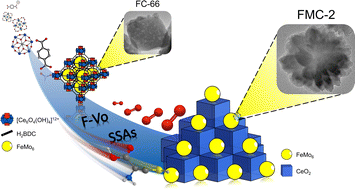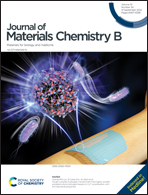Oxygen-powered flower-like FeMo6@CeO2 self-cascade nanozymes: a turn-on enhancement fluorescence sensor†
Abstract
Enzyme cascade reactions in organisms have sparked tremendous interest for their coupled catalysis-facilitated efficient biochemical reactions. However, multi-enzyme cascade nanozymes remain largely unused. In the work, flower-like porous ceria-based integrated enzymes (INAzyme), FeMo6@CeO2 (FMC-n), were readily prepared using an efficient thermally induced process. Owing to a larger specific surface area and excellent adsorption, the flower-like matrix (CeO2) can serve as not only an effective sorbent for the conversion of dissolved oxygen in solution but also an excellent support for self-cascade reactions with FeMo6. Based on the electron transfer through Fe and Ce cycles, FMC-n INAzyme exhibits intrinsic oxidase-, peroxidase- and Fenton-like activities. Moreover, by assessing the Vo mobility and F-Vo relative content of FMC-2 and FC-66, we found that the contribution of enhanced accessibility through the specific surface area (SSA) to the activity of the INAzyme is significantly higher than the active sites. Finally, a fluorescence turn-on enhancement sensing platform based on self-cascade FMC-n for the detection of Cys was established, culminating in a LOD of as low as 0.014 μM in the range of 1–100 μM.

- This article is part of the themed collection: Journal of Materials Chemistry B HOT Papers


 Please wait while we load your content...
Please wait while we load your content...